
Dear friends,
The Muppet is getting bored with me and has decided to invite a new player every month. Our first guest is José Vilar, a good friend and excellent teacher who has chosen the following case:
“41 year old male with thalassemia minor who had a CT as a routine follow-up after an episode of pulmonary embolism three months previously.”
Diagnosis:
1. Pleural plaques
2. Fibrous mesothelioma
3. Scarring post-infarction
4. None of the above
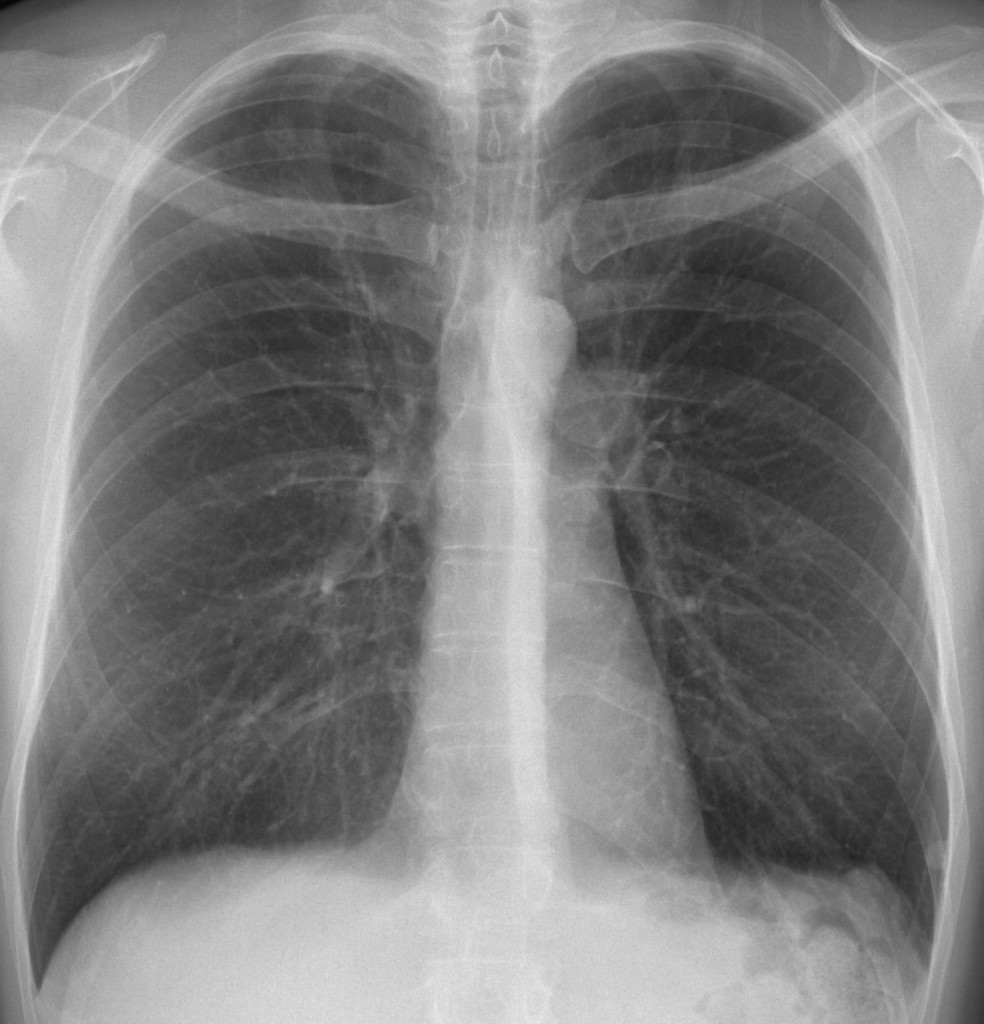
41 year old male, PA chest
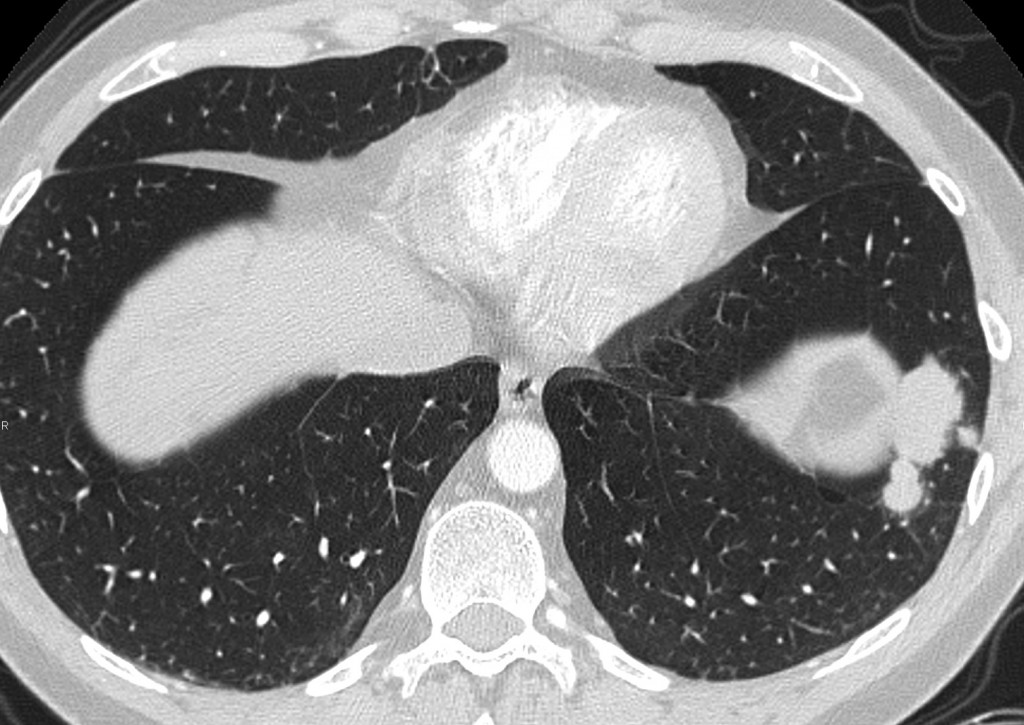
41 year old male, axial CT
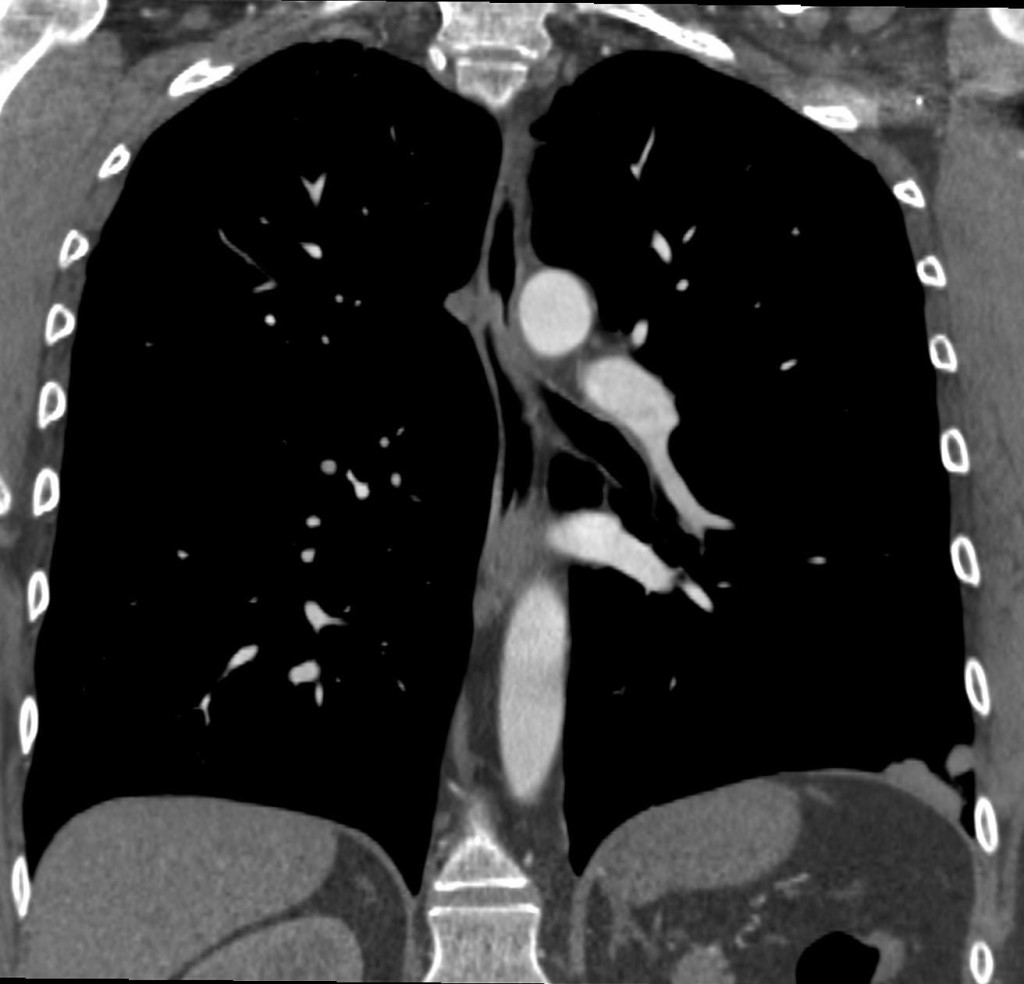
41 year old male, enhanced coronal CT
Click here for the answer to case #10
Dr. Vilar says:

The PA radiograph shows some nodular densities near the left cardiophrenic angle.
The spleen shadow is not identified.
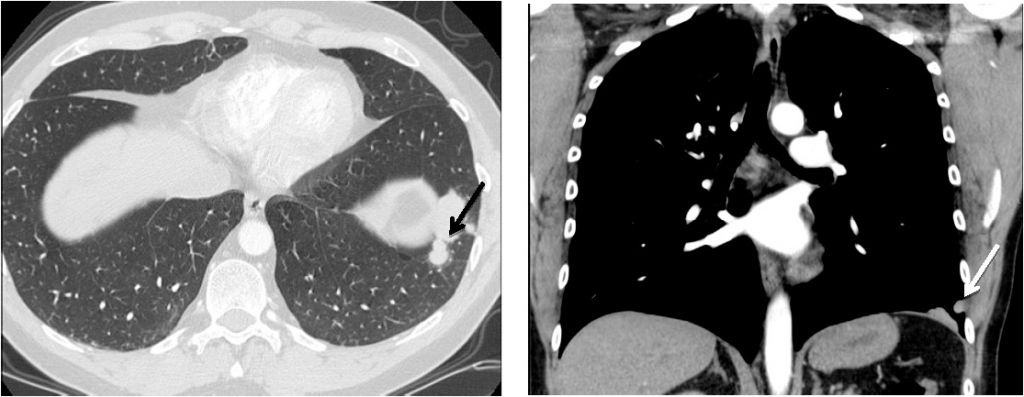
Axial and coronal CT views in an early angiographic phase show the presence of nodular lesions in the surface of the pleura.
The coronal view shows an absence of the spleen in the left infradiaphragmatic region.
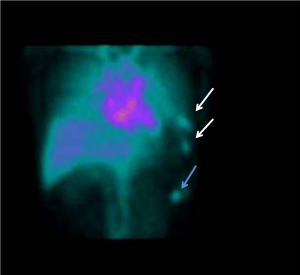
The nuclear Medicine study performed with the patient´s erythrocytes marked with Tc 99m shows the typical uptake in the the splenic nodules similar to that of the liver.
Note the presence of splenosis above ( white arrows) and below the diaphragm (blue arrow)
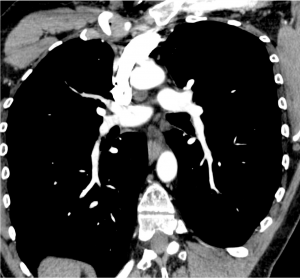
The CTA did not demonstrate any residual pulmonary embolism.
A further investigation showed that the patient had had a left nephrectomy and splenectomy after an accident several years previously.
Final diagnosis: Pleural splenosis.
Teaching point: Pleural nodules in the left side: splenosis is a good choice if you don´t see the spleen.










Esplenosis is my first diagnosis.
Splenosis.
pleural plaques
thoracic splenosis or hamptons’s hump
hampton’s hump
resolving infarction(hampton’s hump)
mmm… i think none of the above 🙂
non of the above
splenosis
non of the above
none of the above
splenosis before i read the other comments 🙂
I believe you. Doesn’t mean you are right, though…
hampton’s hump
A later phase would allow us analise its enhancement pattern and compare it with the splenic tissue. An infarction would not enhance.
rounded atelectasis after polmonary infarction
Mr. Muppet I give up. As usually I vote for four. It is not SFTP neither pleural plaques. It could be post infarction scarring but it would be too obvious (as far as we know Mr. Muppet. New Year’s greetings.
Muppet says: sometimes you have to notice what is missing…
where is gastric fornix air bublle?
dif.dg.meta deposits,or extramedullary hematopoesis maybe
first of all – excuse my very bad english.
I miss the splen – and think, patient underwent a splenectomia because of hid thalassemia. Perhaps he had a lesion of diaphragma intraoparativ with persistent hernia; I’d like to see more coronar reconstructions …
My answer is 4.
As far as I know Dr Vilar is a “right” radiologist.
Why we don´t have lateral view?
Must I think Dr Vilar is going to the left side?
Indeed The aswer, my friend, is in the Left
Me too for thoracic splenosis
I vote 4. It seems there is also a nodule projecting in the right apical zone and maybe another peripheral in left subclavicular area. Extramedullary hematopoiesis or Hampton hump would have been the dx in the clinical setting, but mets are too.
3. Scarring post-infarction
None of the above. Mr. Muppet my diagnosis is extramedullary hematopoiesis. The patient seems to have a splenectomy in the coronal view.
Resolving infarct
I think the invited guest has been very successful. Muppet is jealous!
Answer will be posted shortly
D : None of the above !
Muppet: I’m your father…
Splenosis, obviously……….
It can’t be anything else…..